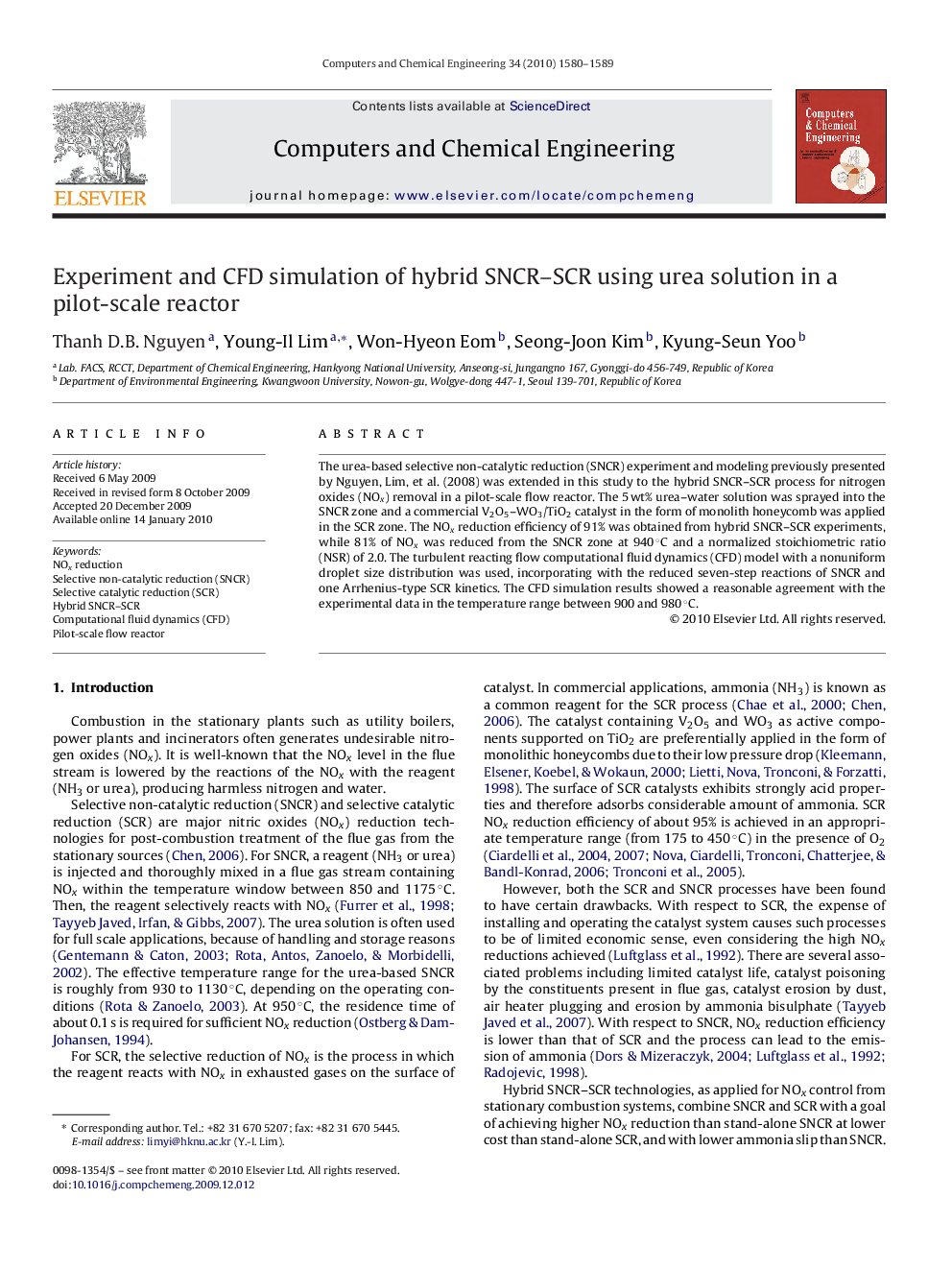| Article ID | Journal | Published Year | Pages | File Type |
|---|---|---|---|---|
| 173119 | Computers & Chemical Engineering | 2010 | 10 Pages |
The urea-based selective non-catalytic reduction (SNCR) experiment and modeling previously presented by Nguyen, Lim, et al. (2008) was extended in this study to the hybrid SNCR–SCR process for nitrogen oxides (NOx) removal in a pilot-scale flow reactor. The 5 wt% urea–water solution was sprayed into the SNCR zone and a commercial V2O5–WO3/TiO2 catalyst in the form of monolith honeycomb was applied in the SCR zone. The NOx reduction efficiency of 91% was obtained from hybrid SNCR–SCR experiments, while 81% of NOx was reduced from the SNCR zone at 940 °C and a normalized stoichiometric ratio (NSR) of 2.0. The turbulent reacting flow computational fluid dynamics (CFD) model with a nonuniform droplet size distribution was used, incorporating with the reduced seven-step reactions of SNCR and one Arrhenius-type SCR kinetics. The CFD simulation results showed a reasonable agreement with the experimental data in the temperature range between 900 and 980 °C.
